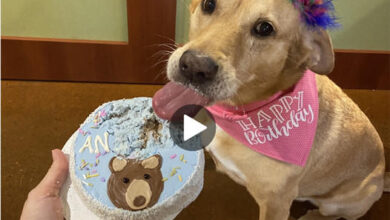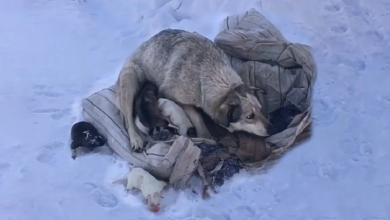
Are you struggling to choose between wet vs. dry dog food for your furry friend? It can be a tough decision, as both options have their pros and cons. However, understanding your dog’s nutritional needs is key to making the right choice.
In this article, we will explore the benefits and drawbacks of wet and dry dog food, as well as provide guidance on how to choose the right type of food for your pooch.
Firstly, it’s important to note that dogs require a balanced diet that includes protein, carbohydrates, fats, vitamins, and minerals. The type of food you choose will affect how well your dog meets these nutritional requirements.
Wet dog food is typically high in moisture content (around 75%) compared to dry dog food (around 10%). This can be beneficial for dogs who struggle with dehydration or kidney problems.
On the other hand, dry dog food is convenient and cost-effective while also promoting dental health by helping scrape away plaque build-up on teeth. However, there are also potential downsides to both types of foods which should be considered before making a final decision.
Understanding Your Dog’s Nutritional Needs
Your furry friend deserves the best, so understanding their nutritional needs is crucial to keeping them happy and healthy! Understanding nutrient requirements is key in providing your dog with a balanced diet. Dogs need essential nutrients such as protein, carbohydrates, fats, vitamins, and minerals for optimal health. These nutrients can be found in both wet and dry dog foods.
However, it’s important to note that dogs are unique individuals with varying dietary needs based on age, breed size, activity level, and overall health. Common dietary deficiencies can arise from feeding your dog an imbalanced diet over time. Some of the most common deficiencies include low levels of vitamin E or B12, zinc or iron deficiency which can lead to skin problems or even anemia.
With this in mind, it’s important to choose a high-quality dog food that meets your pet’s specific nutritional requirements. In the next section, we’ll explore some of the pros of wet dog food versus dry and how it may benefit your pup’s overall health!
Pros of Wet Dog Food
Indulging in canned meals may seem like a luxury for our furry friends, but the benefits of wet dog food extend beyond just satisfying their taste buds. Here are 4 reasons why you might want to include wet food in your pet’s feeding schedule:
- Hydration: Wet dog food is mostly water, which can help keep your pet hydrated and prevent urinary tract infections.
- Taste preferences: Some dogs simply prefer wet food over dry kibble. If your pet’s a picky eater or has dental issues that make chewing difficult, wet food may be a good option.
- Nutritional value: Wet dog food often contains high-quality proteins and fats, as well as added vitamins and minerals that can benefit your pet’s overall health.
- Variety: With so many flavors and textures available, you can switch up your pet’s diet to keep mealtime interesting and enjoyable.
While there are certainly pros to feeding your dog wet food, it’s important to consider the potential downsides as well. In the next section, we’ll take a look at some of the cons of wet dog food, and what you should keep in mind before making any dietary changes for your furry friend.
Cons of Wet Dog Food
If you’re considering switching to canned meals for your furry friend, it’s important to note that wet food can be messier than dry kibble. The texture of wet dog food is often more moist and soft than its dry counterpart, which can make it difficult to handle without making a mess. Additionally, many dogs tend to slobber and drool when eating wet food, which can leave behind a slimy residue on floors or carpets.
Another potential downside of wet dog food is the need for proper storage. Once opened, canned dog food needs to be refrigerated and used within a few days before it spoils. This means that pet owners need to have enough fridge space available to store their pup’s meals and may need to plan ahead for grocery shopping trips in order to keep a steady supply of fresh cans on hand.
Despite these drawbacks, there are still many benefits that come with feeding your dog wet food. For example, many dogs find the taste and smell of canned foods more appealing than dry kibble. Additionally, the added moisture content in wet dog food can help keep your pup hydrated and support healthy digestion.
With careful consideration and planning around handling and storage requirements, switching to wet food may be an excellent choice for your furry companion’s health and well-being.
Transitioning into the subsequent section about the pros of dry dog food, it’s also important to consider some advantages that come with choosing kibble over canned meals.
Pros of Dry Dog Food
If you’re looking for convenience and cost-effectiveness, dry dog food is the way to go. It’s easier to store and transport, and it’s typically less expensive than wet dog food. Plus, the crunchy texture of dry kibble promotes dental health by helping to scrape away plaque and tartar buildup.
With a longer shelf life than wet food, you can stock up without worrying about it going bad quickly.
Convenience and cost-effectiveness
You’ll find that wet dog food is more convenient and cost-effective than dry options, making it a smart choice for busy pet owners on a budget.
Wet dog food comes in single-serve containers, which means that you don’t have to worry about measuring out the right amount of food each time. This can save you valuable time during your daily routine, especially if you’re someone who has to rush out the door in the morning.
Additionally, because wet dog food contains more water than dry food, it can help keep your pup hydrated throughout the day. Plus, with pre-packaged servings, feeding schedules become easier to manage. You won’t have to worry about portion control or overfeeding your furry friend.
All of these factors make wet dog food an appealing option for those looking for a hassle-free way to feed their pets while sticking to a tight budget. However, when it comes to promoting dental health, dry dog food may be the better option.
Promotes dental health
Promoting dental health, dry dog food has been shown to reduce tartar buildup by up to 40%. The crunchy texture of dry kibbles works like a toothbrush, scraping away plaque and tartar from your dog’s teeth. Additionally, the act of chewing on dry food stimulates saliva production which helps in washing away any remaining particles and bacteria that can lead to dental problems.
However, if you’re concerned about your dog’s dental hygiene but prefer wet food for other reasons, there are alternatives for dental health in dogs. Dental chews are a great way to promote healthy teeth and gums. They come in various shapes and sizes catering to different breeds and sizes of dogs.
You can also increase your dog’s water intake as it helps flush out any debris left in their mouth after meals. While wet food may not be the best option for promoting dental health, there are still plenty of ways to ensure your furry friend has a healthy smile.
In addition to promoting dental health, another benefit of dry dog food is its longer shelf life.
Longer shelf life
While dry dog food may help promote dental health, there are other factors to consider when choosing between wet and dry dog food. One important consideration is the shelf life of the food. Dry dog food typically has a longer shelf life than wet dog food.
When it comes to storage considerations, dry dog food is much easier to store than wet dog food. You can simply keep it in an airtight container in your pantry or garage without worrying about spoilage. Additionally, because dry dog food has lower moisture content than wet dog food, it is less likely to attract bacteria or mold. This means that you can buy larger bags of dry dog food at once and not have to worry about it going bad before your pup finishes eating it.
To further convince you that longer shelf life is an important factor when choosing between wet and dry dog food, here are some additional benefits of opting for a type of pet chow with this characteristic:
- Saves money
- Reduces waste
- Allows for bulk purchases
- Makes feeding more convenient
Now let’s dive into some cons of dry dog food that you should be aware of.
Cons of Dry Dog Food
One major downside of dry dog food is that it can lead to dehydration in dogs. Since dry kibble has a very low moisture content, it may not provide enough water for your pet. Dogs need to consume adequate amounts of water every day to maintain proper hydration levels and prevent health complications. Inadequate hydration can cause problems such as urinary tract infections, kidney stones, and constipation.
In addition to dehydration, dry dog food may also contribute to dental issues in dogs. Dry kibble tends to stick on the teeth and gums, leading to tartar buildup and tooth decay. This can cause pain and discomfort for your pet while eating or chewing toys. Furthermore, some preservatives used in dry dog food have been linked with oral cancer in dogs.
Lastly, some dogs may experience allergies or digestive problems from consuming dry dog food regularly. Many commercial brands contain fillers like grains and corn that are difficult for some dogs to digest properly. Others may be allergic to certain ingredients used in their food. Therefore, if you notice any signs of allergy or digestive upset such as vomiting or diarrhea after feeding your dog with dry kibble, you should consult a veterinarian immediately.
Choosing the right type of food for your canine companion is crucial for their overall health and well-being. While there are benefits to both wet and dry dog foods, it’s essential to consider your pet’s individual needs when making this decision. A balanced diet with high-quality protein sources and sufficient nutrients will help ensure that your furry friend stays healthy and active throughout their life span.
Choosing the Right Type of Food for Your Dog
When it comes to choosing the right type of food for your dog, consulting with a veterinarian should be your top priority. They can help you determine what specific nutrients and ingredients your furry friend needs based on their age, breed, and health condition.
You should also consider your dog’s preferences when selecting food options and don’t hesitate to try out different options until you find the one that works best for them.
Consulting with a veterinarian
Partner, consulting with your trusted veterinarian is crucial in determining whether wet or dry dog food is best for your furry friend.
Your vet can take into account factors to consider such as your dog’s age, breed, activity level, and any health issues they may have. They can also provide you with the benefits of professional advice when it comes to selecting the right type of food for your dog.
Your vet can also help you navigate through the different options available on the market and recommend a specific brand or formula that will meet your dog’s nutritional needs. By seeking their expert guidance, you can feel confident that you are making an informed decision about what to feed your pet.
Once you have determined which type of food is best for them, considering your dog’s preferences will come into play in ensuring that they enjoy mealtime and stay healthy.
Considering your dog’s preferences
To make sure your furry friend enjoys mealtime and stays healthy, it’s important to consider their preferences when selecting their food. Some dogs prefer wet food while others like dry kibble better. In fact, many dogs have unique tastes and dietary needs that can be addressed through personalized feeding options.
Dog food preferences can vary depending on a variety of factors including age, breed, health issues, and even the weather. For example, older dogs or those with dental problems may find it easier to chew wet food while younger pups may enjoy the crunchiness of dry kibble. It’s important to take into account your dog’s individual needs and preferences before making a decision about which type of food to feed them.
When considering different options for your furry friend, it’s helpful to try out different types of foods until you find one that they truly enjoy.
In the next section, we’ll go over some tips for introducing new foods and transitioning between wet and dry options seamlessly.
Trying out different options
Hey, you gotta admit, your pup deserves the best of the best when it comes to mealtime, so why not try out a few different options until you find their absolute favorite?
When switching diets from dry to wet food or vice versa, it’s important to do so gradually over a period of 7-10 days. This will help prevent any gastrointestinal upset that can come with a sudden change in diet.
Here are five tips for taste testing different dog foods:
- Choose high-quality brands with real meat as the first ingredient
- Mix in small amounts of wet food into their dry kibble to see if they prefer a mix
- Try different flavors and textures such as chunky or smooth wet food
- Monitor their stool consistency during the transition period
- Keep track of which foods they seem to enjoy most and stick with those options
By taking the time to try out different options and paying attention to your dog’s preferences and reactions, you can ensure that they’re getting the best possible nutrition while also enjoying every bite.
Conclusion
Congratulations! You’re now equipped with a better understanding of your furry friend’s nutritional needs and the pros and cons of both wet and dry dog food.
While wet dog food may offer more moisture and taste, it can also be more expensive and spoil faster. On the other hand, dry dog food is convenient, affordable, and promotes dental health.
When choosing the right type of food for your dog, consider their age, breed, activity level, and overall health. Consult with your veterinarian to determine any specific dietary requirements or allergies that may affect your decision.
Remember to read ingredient labels carefully and prioritize high-quality protein sources like chicken or fish. In conclusion, feeding your dog a balanced diet is essential for their long-term health and happiness.
With proper research and care, you can find the perfect meal plan that will keep their tails wagging for years to come. So go ahead – treat your pup to a delicious meal today!
Read more:
Dog Nutrition: Guide To Dog Food Nutrients
How To Choose A Healthy Dog Food


















































